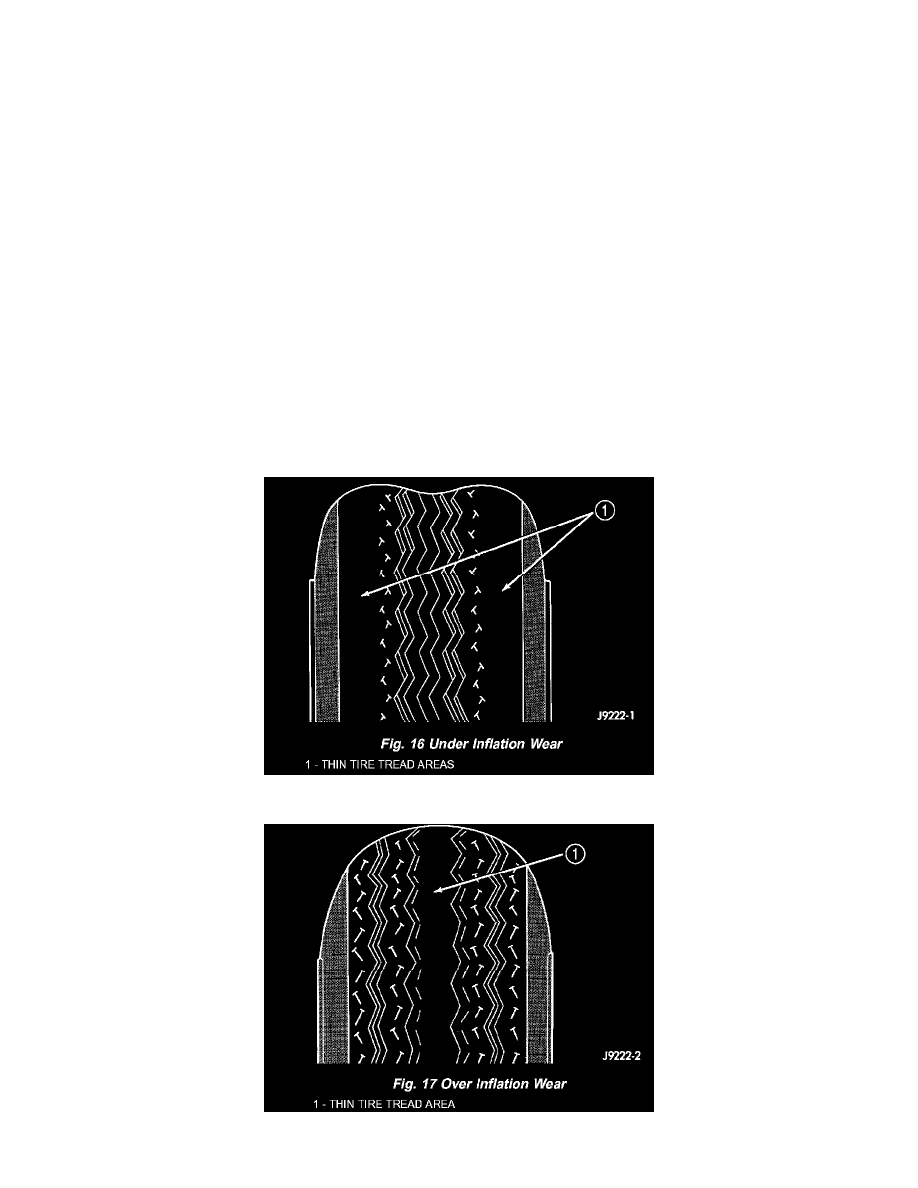Sebring Sedan L4-2.4L VIN J (2004)

Tires: Procedures
Tire Inflation Pressures
STANDARD PROCEDURE - TIRE INFLATION PRESSURES
The specified tire pressures have been chosen to provide safe operation, vehicle stability, and a smooth ride. The proper tire pressure specification can
be found on the Tire Inflation Pressure Label provided with the vehicle (usually on the rear face of the driver's door).
A quality air pressure gauge is recommended to check tire air pressure. Tire pressure should be checked cold once per month. Check tire pressure
more frequently when the weather temperature varies widely. Tire pressure will decrease when the outdoor temperature drops. After checking the air
pressure, replace valve cap finger tight.
Inflation pressures specified on the Tire Inflation Pressure Label are always the cold inflation pressure of the tire. Cold inflation pressure is obtained
after the vehicle has not been operated for at least 3 hours, or the vehicle is driven less than one mile after being inoperative for 3 hours. Tire inflation
pressures may increase from 2 to 6 pounds per square inch (psi) during operation. Do not reduce this normal pressure buildup.
Improper inflation can cause:
-
Uneven wear patterns
-
Reduced tread life
-
Reduced fuel economy
-
Unsatisfactory ride
-
The vehicle to drift.
WARNING: OVER OR UNDER INFLATED TIRES CAN AFFECT VEHICLE HANDLING. THE TIRE CAN FAIL SUDDENLY,
RESULTING IN LOSS OF VEHICLE CONTROL.
Under inflation causes rapid shoulder wear, tire flexing, and can result in tire failure (Fig. 16).
Over inflation causes rapid center wear and loss of the tire's ability to cushion shocks (Fig. 17).
